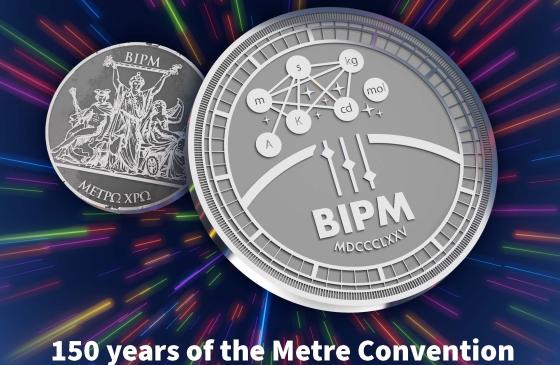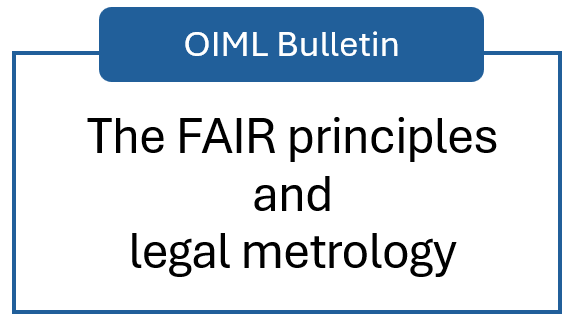Digital transformation

Introduction to general concepts, terminology and principles of digital transformation in legal metrology

In 2022, the Digitalisation Task Group (DTG) was founded to support the OIML in addressing the many questions and challenges arising from digitalisation and investigating potential benefits for the organisation and its members.
Already at the first DTG meeting it was concluded that there is a need to develop a common understanding of basic vocabulary and terminology. In this context it is important to note that the DTG does not intend to parallel work in other OIML Project Groups (PGs) and committees related to vocabulary. Instead, the DTG aims to summarise and complement the existing work with the vocabulary needed for a strategic discussion of the role of and challenges for legal metrology in the digital era.
There are several sources for terms and vocabulary from existing OIML publications:
- Vocabulary in Legal Metrology (VIML) defining basic vocabulary in legal metrology;
- OIML Guide 18 providing a list of terms defined in OIML publications;
- OIML D 31 Software-controlled measuring instruments.
The existing work from within the OIML, when it comes to terms related to “digital”, basically covers the technologies in products and services investigated under the realm of legal metrology. Examples are “digital data processing device”, “digital display” or “digital indication”.
An exception to this is OIML D 31, which covers a wider range of terminologies related to digital technologies, because of the topic of the PG. That is, the D 31 vocabulary list contains terms such as “audit trail”, “cryptographic certificate” or “data domain”.
Another exception is the new OIML Guide 23 Guide to the use of online technology for conducting CEEMS activities in a post-COVID world. This Guide introduces terms such as “e-learning” and “online technology” without a concise definition as usually given for other vocabulary in OIML publications. Moreover, Chapter 8 of this Guide clearly states that terms such as “digitalisation”, “digital transformation”, “digitisation” and “the digital agenda” have not been defined within the OIML and that there is not even a consensus on their exact meaning. Therefore, the DTG has decided to take the definitions from Gartner as its orientation and starting point.
The Gartner Glossary defines digitisation as the “process of changing from analogue to digital form” in contrast to digitalisation as “the use of digital technologies to change a business model” and “the process of moving to a digital business”. The term digital transformation can then be defined as “a business process (a digitalization) enabled by a technical change (a digitization)”.
Digital transformation
The term “transformation” may refer to processes in legal metrology that are evolving towards end-to-end digital processes by replacing physical (i.e., analogue) steps with digital ones. The term may also refer to changes in technologies or processes to enable a better handling in some way. It is important to note that this transformation does not necessarily have a defined final state. Instead, it includes an ongoing adoption of new (digital) technologies considered as facilitators to make metrological services even better.
Digitalisation
Digitalisation in legal metrology is an essential part of the wider digital transformation in the quality infrastructure. Processes in legal metrology rely on measurement standards, accreditation, conformity assessment, market surveillance and standardisation. Thus, digitalisation in legal metrology is closely related to digitalisation within the rest of the quality infrastructure. At the same time, industries and economies are progressing rapidly, which results in challenges for the quality infrastructure. Moreover, the expectation from customers and end-users in the digital era is that all information and processes are making use of digital technologies in a reasonable way for their benefit. Some examples of topics that need to be addressed by the quality infrastructure are as follows:
- large quantity of data sources underpinning new digital services, and novel approaches for data analysis, based on artificial intelligence and machine learning;
- interconnected, versatile, and often inexpensive sensors, combined in so-called sensor networks as in the “Internet of Things” (IoT);
- fundamentally new approaches in production, such as additive manufacturing.
In 2022, the Task Group “SI Digital Framework” of the International Committee for Weights and Measures (CIPM), together with the International Bureau of Weights and Measures (BIPM) initiated the “Joint Statement of Intent on the digital transformation in the international scientific and quality infrastructure” , now signed by 10 international organisations – including the OIML. This statement is a commitment to collaborate in the implementation and further development of the International System of units (SI) for the digital world as well as collaborating in the wider digital transformation. The role of the OIML DTG is to translate the Joint Statement of Intent into concrete recommendations and actions for the OIML. The DTG is also the group within the OIML which is actively collaborating with other institutions of the international quality infrastructure under the Joint Statement.
Digitisation
The provision of documents and certificates in a digital form is increasingly becoming common practice also in legal metrology. Approaches range from providing PDF documents via email or cloud services to the use of QR codes pointing to sources on the internet. It is important to note that the transition from digitisation to digitalisation requires streamlining and harmonising the analogue processes and formats. Otherwise, the use of digital technologies will not result in an improvement.






